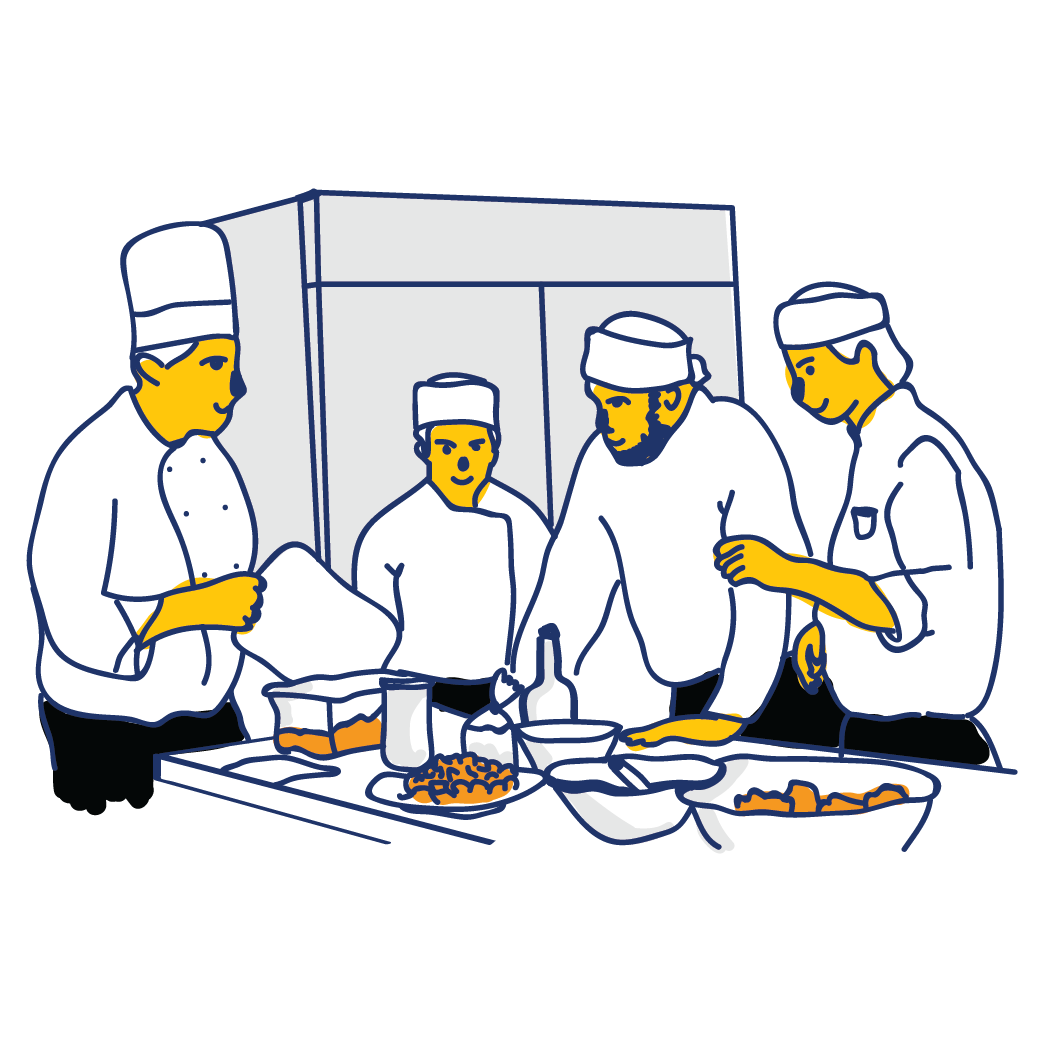Cultivating a Strong Food Safety Culture
Jul 16, 2024

This entry will delve into the "food safety culture" concept and its importance in safeguarding our meals. Whether you're a food enthusiast or a professional in the field, understanding and embracing a robust food safety culture is vital to ensure the health and well-being of consumers everywhere. So, let's embark on this journey to cultivate a safer food environment together.
I. What is Food Safety Culture?
Food safety culture refers to the collective mindset, attitudes, and behaviors regarding food safety within an organization or society. It encompasses the values, norms, and practices that prioritize the prevention of foodborne illnesses, contamination, and other hazards throughout the food supply chain.
A. The Foundation of Food Safety Culture
At the core of a strong food safety culture lies awareness and knowledge. Individuals and organizations must understand the potential risks associated with food handling, processing, and consumption. This awareness empowers them to implement appropriate measures to mitigate these risks effectively.
B. Key Elements of Food Safety Culture
Leadership and Commitment: Leadership plays a pivotal role in fostering a positive food safety culture. When management and executives prioritize and demonstrate commitment to food safety, it sets the tone for the entire organization.
Training and Education: Proper training and education are crucial to equip individuals with the necessary skills and knowledge to handle food safely. Training should be ongoing, comprehensive, and tailored to specific roles within the food industry.

Communication and Collaboration: Effective communication ensures that food safety messages are conveyed clearly and consistently throughout the organization. Collaboration among stakeholders, suppliers, regulators, and consumers promotes shared responsibility and accountability.

Continuous Improvement: A robust food safety culture emphasizes continuous improvement through regular assessments, feedback loops, and learning from past experiences. This proactive approach helps identify and address potential risks before they escalate.
II. Benefits of a Strong Food Safety Culture
A strong food safety culture benefits consumers and food industry professionals.
A. Enhanced Consumer Confidence:
When consumers trust that the food they purchase and consume is safe, it enhances their confidence in the food industry. This trust is vital for maintaining a thriving and sustainable food ecosystem.
B. Prevention of Foodborne Illnesses:
A strong food safety culture focuses on prevention rather than reaction. By implementing rigorous control measures and adhering to best practices, the likelihood of foodborne illnesses, such as Salmonella or E. coli, can be significantly reduced.
C. Brand Reputation and Success:
Food businesses with a strong food safety culture build a solid reputation for quality and safety. This, in turn, fosters customer loyalty, attracts new consumers, and contributes to the brand's long-term success.
D. Regulatory Compliance:
Adhering to food safety regulations is not only a legal requirement but also a moral obligation. By embracing a food safety culture, organizations can ensure compliance, avoid penalties, and maintain a positive relationship with regulatory authorities.
III. Nurturing a Food Safety Culture Everywhere
Food safety culture extends beyond the boundaries of food establishments and enters wherever we handle and prepare meals for ourselves and our loved ones.
A. Safe Food Storage:
Proper storage of perishable foods, such as raw meat, dairy products, and leftovers, is crucial to prevent the growth of harmful bacteria. Refrigeration temperatures should be below 40°F (4°C) to inhibit bacterial growth.
B. Hygienic Food Handling:
Cleanliness is paramount when handling food at home. Wash hands thoroughly before and after handling raw foods, use separate cutting boards for raw and cooked items, and avoid cross-contamination.
C. Cooking Temperatures:
Cooking food to the correct internal temperature is essential to eliminate harmful bacteria. Utilize a food thermometer to ensure that meats, poultry, and seafood reach the appropriate temperature for safe consumption.
Conclusion
Developing and nurturing a strong food safety culture is essential for safeguarding the well-being of consumers. By prioritizing leadership commitment, education, communication, collaboration, and continuous improvement, we can create a safer and healthier future, one plate at a time.
If you need expert assistance in promoting and implementing a robust food safety culture within your organization, look no further than GoHACCP with Experts. We specialize in providing tailored solutions to enhance food safety practices and support the development of a strong food safety culture. Whether you seek guidance in establishing food safety protocols, conducting training programs, or optimizing your food safety management system, our dedicated consultants are here to help. Our team of knowledgeable professionals is equipped with the expertise and experience to guide you through every step of the process.
Nahomy Garcia, B.Sc.
“I currently work as a food safety expert in the HACCP department of the company. I am in charge, together with my team, of developing food safety plans such as HACCP and PC plans under FDA, CFIA, or USDA/FSIS regulations to achieve food certification projects for our clients.”

How to Build Your Prerequisite Program: The Foundation of Food Safety

Debunking Common Food Safety Myths - Part 1

Key Errors to Avoid in Food Safety Audits
Join our Food
Safety Community!
Stay ahead of the curve by exploring emerging
trends and technologies in food safety.

